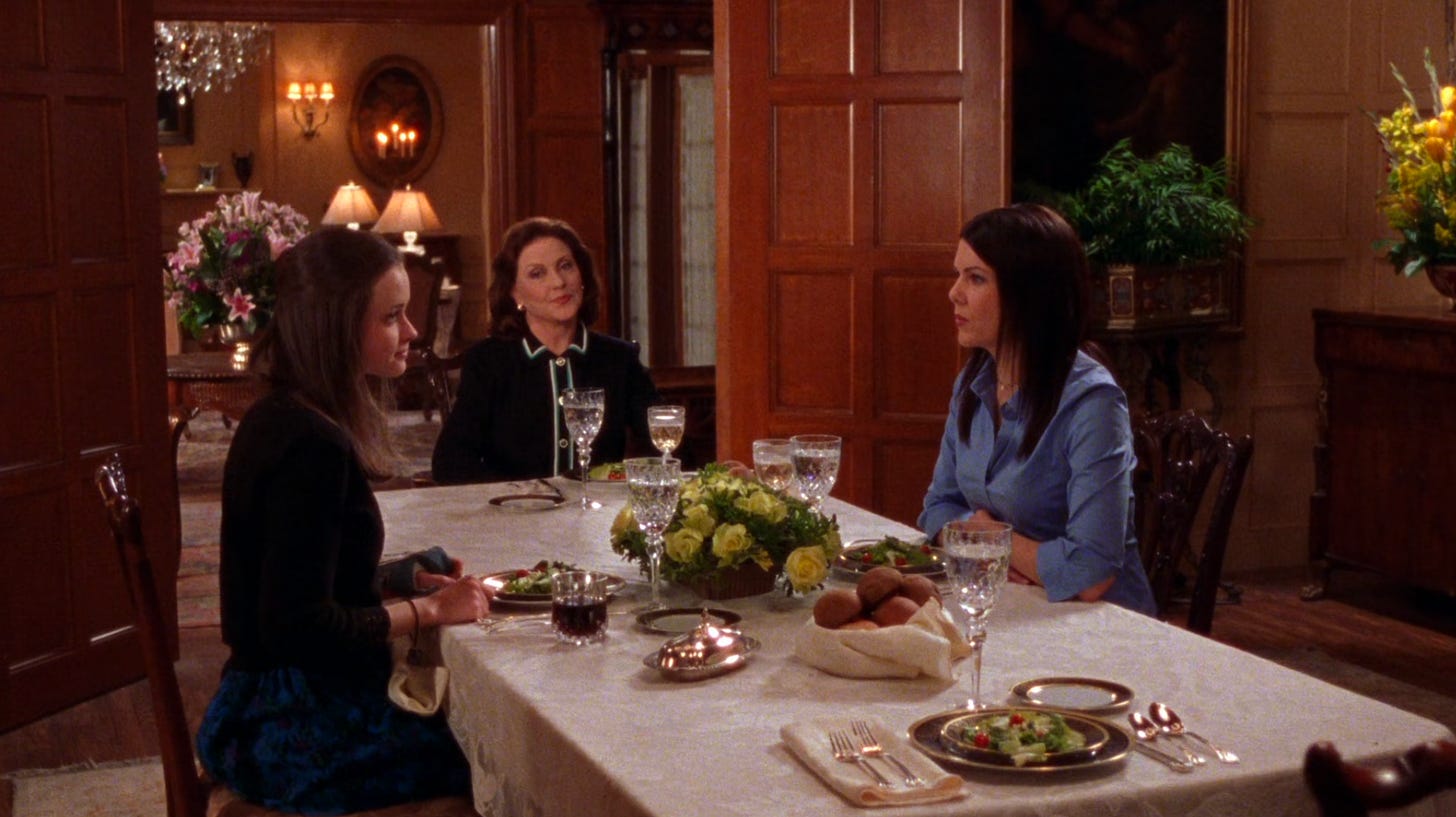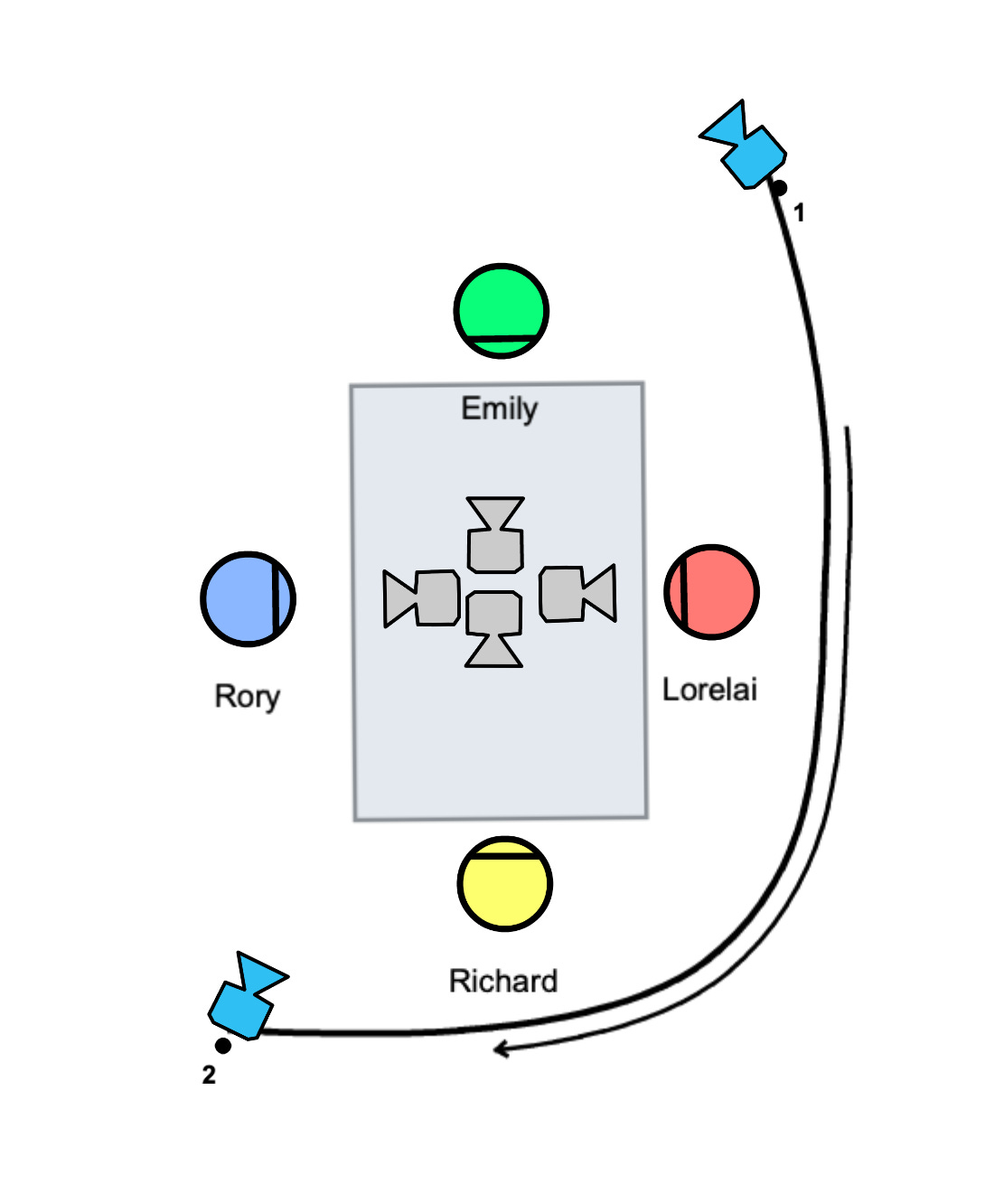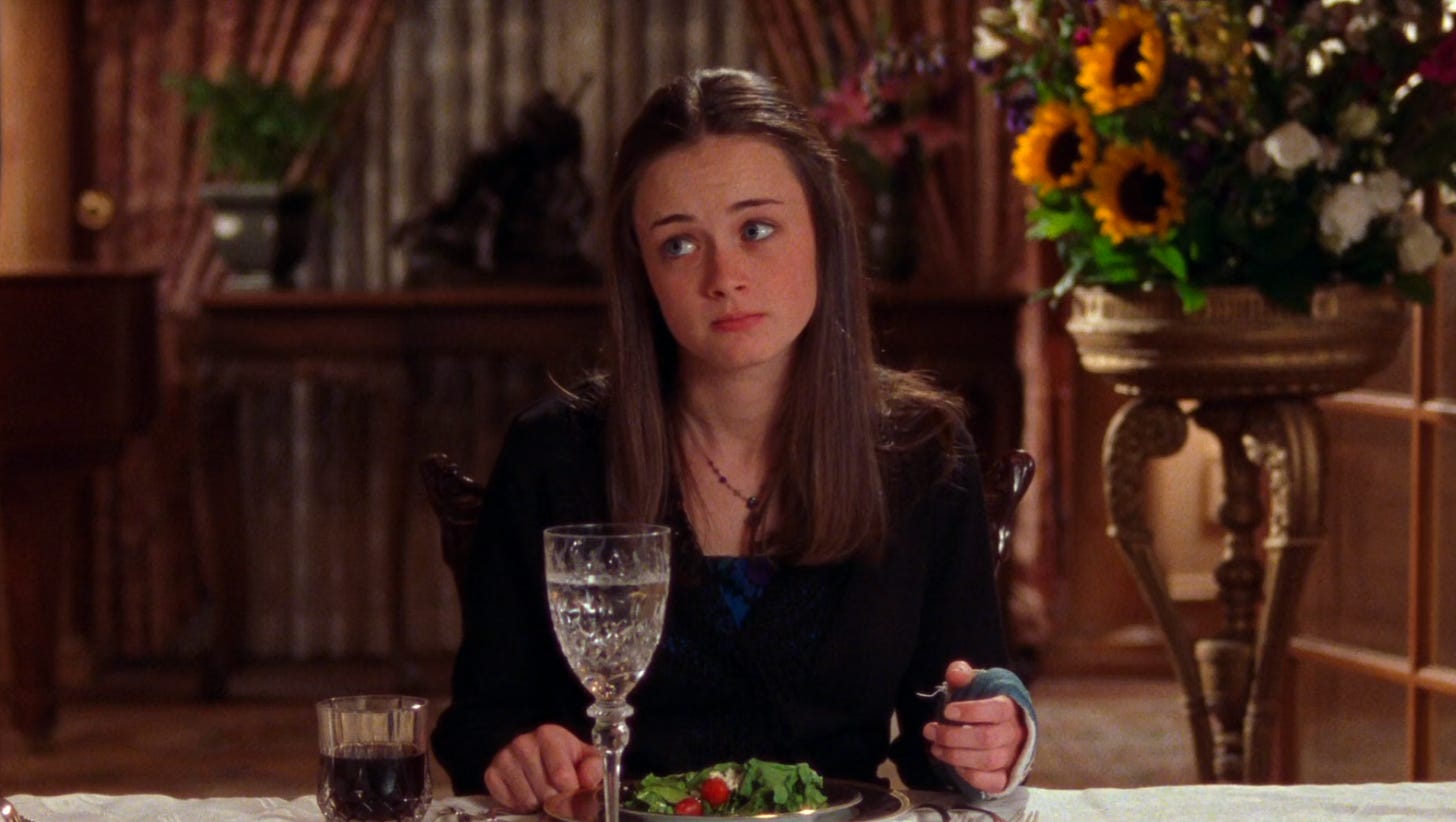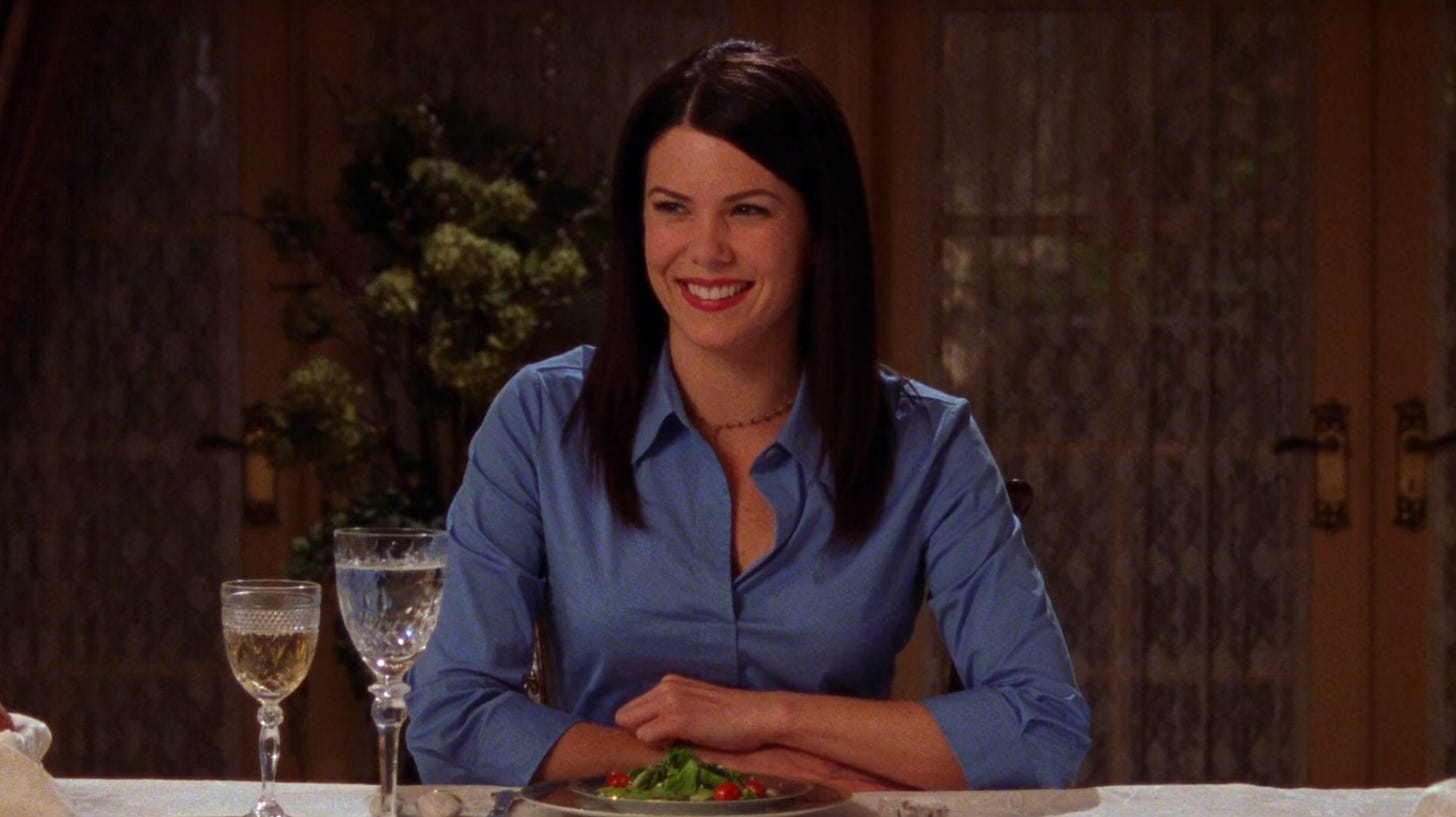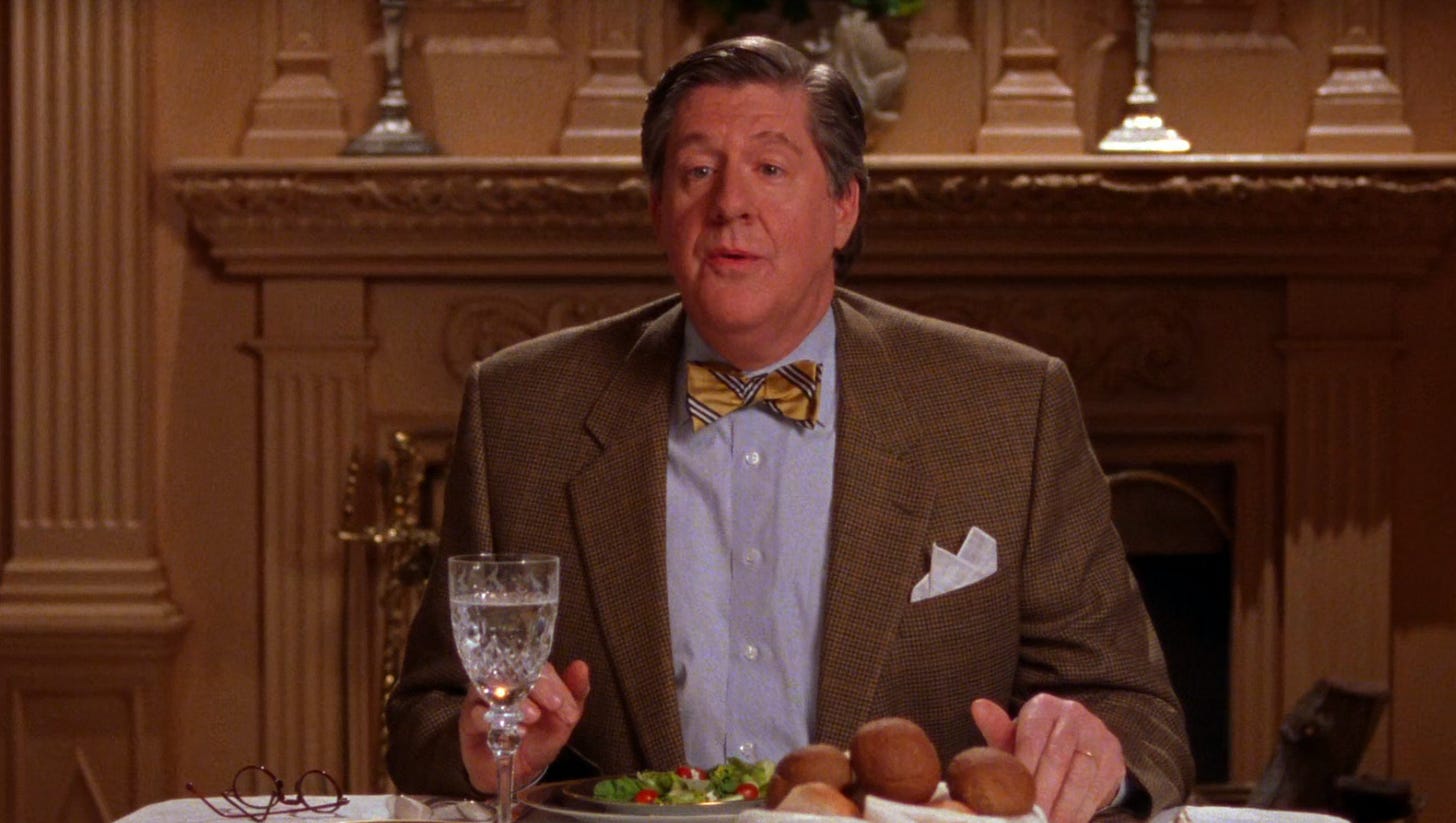Anatomy of a Scene: They Shoot GILMORE GIRLS, Don't They?
A classic Gilmore Girls Friday night dinner setup is four people around a table, camera in the middle, a clean centered Medium Shot of each participant, then an edit which follows their rapidfire patter.
Here’s a classic example from 2.22 "I Can't Get Started"
Establish the Scene
A moving camera brings us into the scene and establishes a wide view of the table, before breaking into singles.
The scene starts with all three titular Gilmore Girls, before adding Richard (with a return to that wide to establish his entrance) to complete the usual dinner foursome.
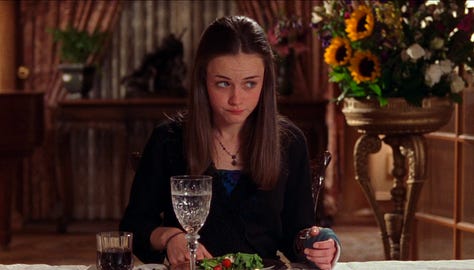
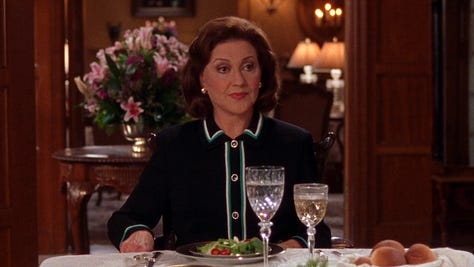
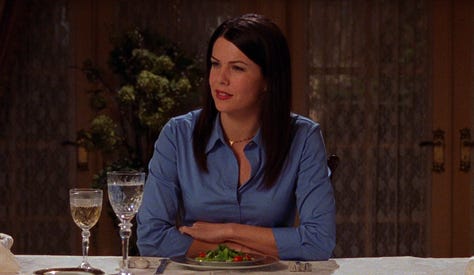
For these singles, the camera essentially sits in the middle of the table, equidistant from each character.
Here’s the diagram: the blue camera is the ‘establishing’ camera which tracks in, and its final position (#2) is also the shot which picks up Richard’s entrance. Then the grey cameras show the four camera positions from the middle of the dinner table.
Basic Angle Shooting
Gilmore Girls is a heavily dialogue-driven show, often shooting 70+ pages per episode (most shows of this length shoot 40-45 pages), with no room for error, because airing on network TV means it had to hit the exact 41.5 minute mark (or whatever length the network dictated at the time).
Though a few scenes each episode use more complex setups such as moving oners, using simpler camera setups in at least half the scenes helps production with both shooting schedule and broadcast constraints.
Scenes like this dinner conversation are quicker to set up (especially once you establish a ‘template’ in certain situations, such as Emily and Richard’s dining room) and make it easier on the editors to trim time and/or lines as needed.
Visual Distinction
Though the angle and shot size is similar on all four characters, and the colour palette and lighting remain the same through the scene, set dressing and backgrounds are all different enough to help the viewer’s visual orientation on each cut.
Editing
Check the video to see how many cuts come just after one character looks at another.
Along with their dialogue delivery, the actors’ timing and looks help drive the edit, and the edit uses those small cues to guide us through the scene and keep the pace trotting along at a good clip.
Takeaways
‘Simple’ camera angles don’t mean a scene is simplistic, let alone bad.
Consider your end goals, whether your dialogue and actors will be the main scene drivers . . . and also take into consideration what your schedule can handle!
Maybe your scene will be be grand with four medium shots, too.

